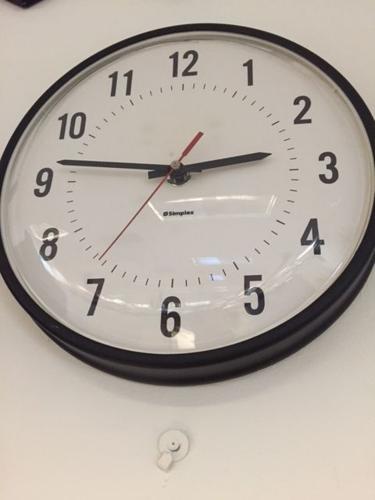Don’t touch the clock.
In Arizona, we neither “spring ahead” nor “fall back.”
The only adjustment we make for Daylight Saving Time is a mental one, when contacting relatives in the old country.
We just have to remember that the rest of the nation fell back one hour in time. It’s now two hours later on the East Coast and one hour earlier on the West one.
We still have fewer hours of evening daylight in winter, but we accomplish that the natural way — allowing the sun to set when it sets, which will come as early as 5:30 p.m. in the darkest days of December.
Don’t grumble too much about the early gloom. We have some of the longest winter days in the nation. In Washington and Maine, the sun sets just after 4 p.m. in the darkest days.
The reason is simple, but we’ve all forgotten it. I asked astronomer and master teacher Tom Fleming of the University of Arizona to remind us why.
“The one root cause is that the Earth’s axis is tilted 23.5 degrees. The axis is not perpendicular to its orbit.”
For part of Earth’s 365-day-plus orbit, the sun shines perpetually on the North Pole and provides additional hours of daylight to the Northern Hemisphere. In Tucson that translates to more than 14 hours on June 21, the summer solstice.
During our winter, the sun warms the Southern Hemisphere and the duration of daylight in Tucson decreases to 10 hours, 40 minutes on Dec. 21 as the sun arcs along the southern horizon.
Farther north, of course, the day is further shortened, leading to those Alaskan winters with little daylight.
Fleming is not a fan of daylight saving time, but he particularly questions the need for it in Alaska.
He likes the fact that Arizona does not change its clocks: “The only decent time to be outside is 4 or 5 in the morning.”
He doesn’t want anybody taking an hour from his mornings to prolong the miserable summer afternoons.
Historically, Arizona once more or less followed the national lead of changing clocks during war times to preserve fuel, though several individual cities have made their own decisions.
In 1966, though, Congress passed the Uniform Time Act.
But that law allowed states to opt out. State lawmakers did just that, making 1967 the last year Arizona was on daylight saving time.
The only part of Arizona where clocks change is on the Navajo Nation, which spans three states and where the tribe has decided to participate in the yearly ritual.
Indiana changed its law in 2006 to have all counties change their clocks. That leaves Hawaii as the only other state that ignores the law.
The historical portion of the this article comes from an earlier Capitol Media Services story.





